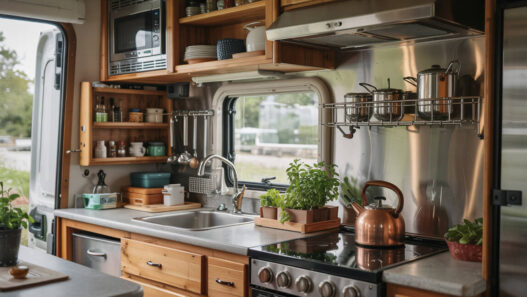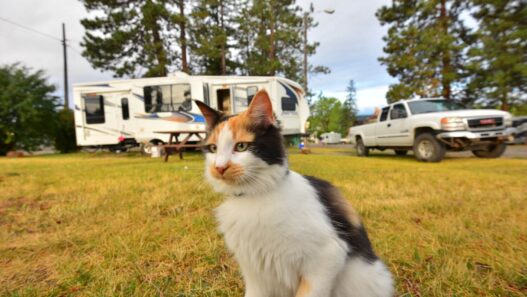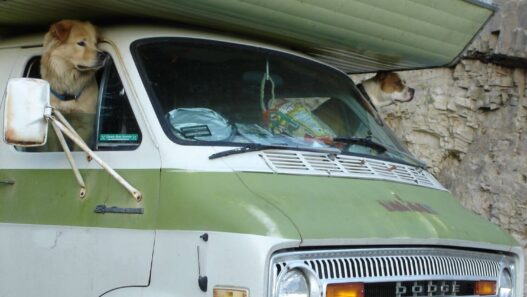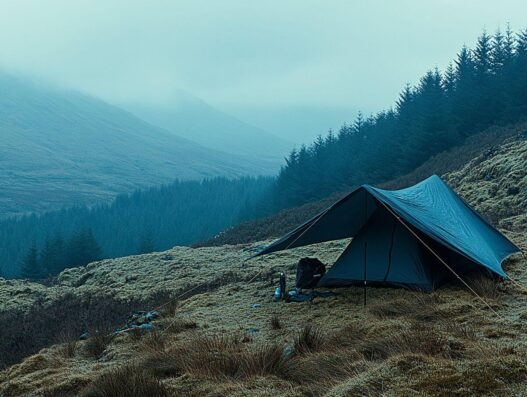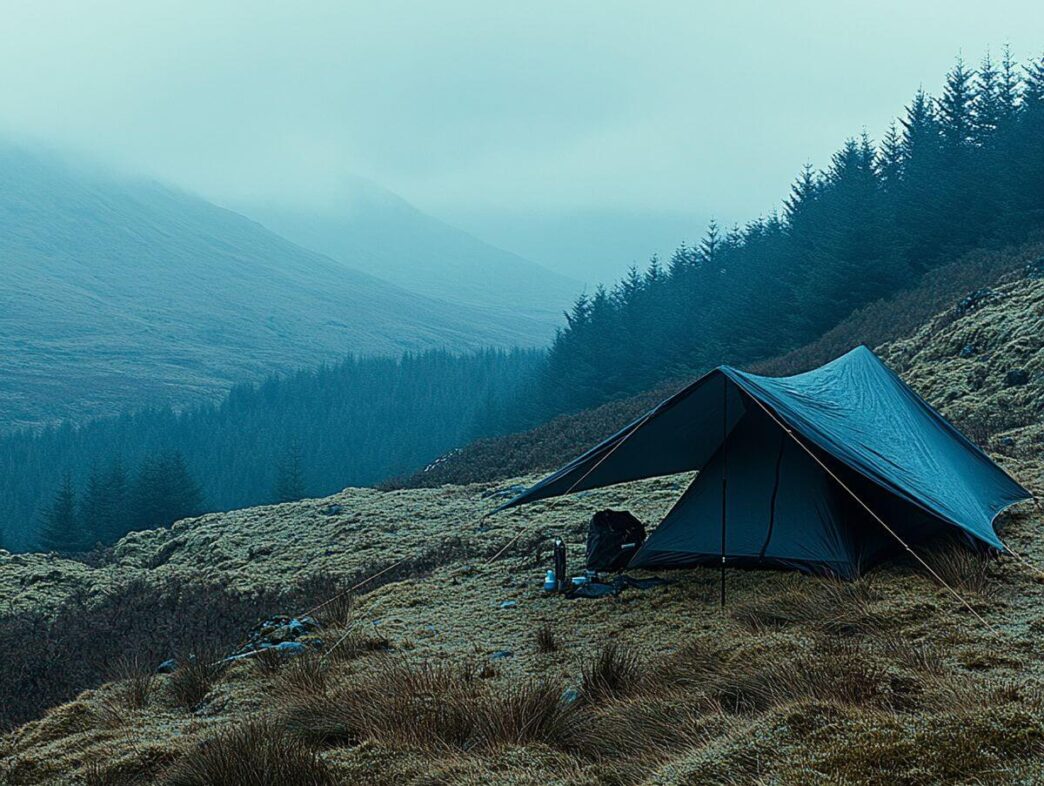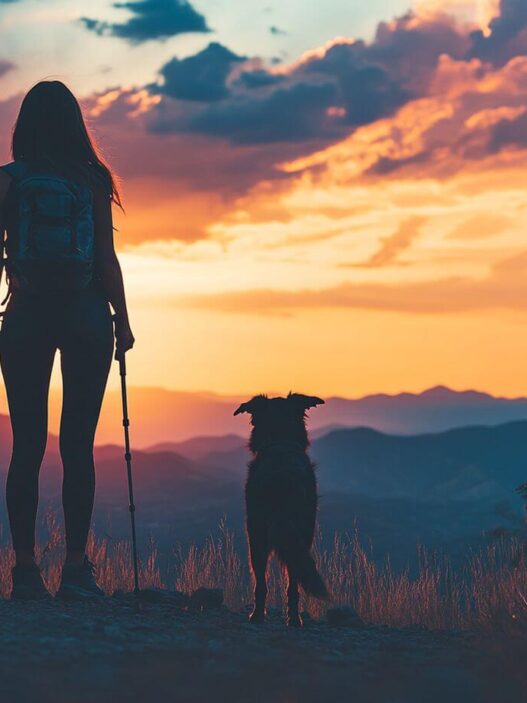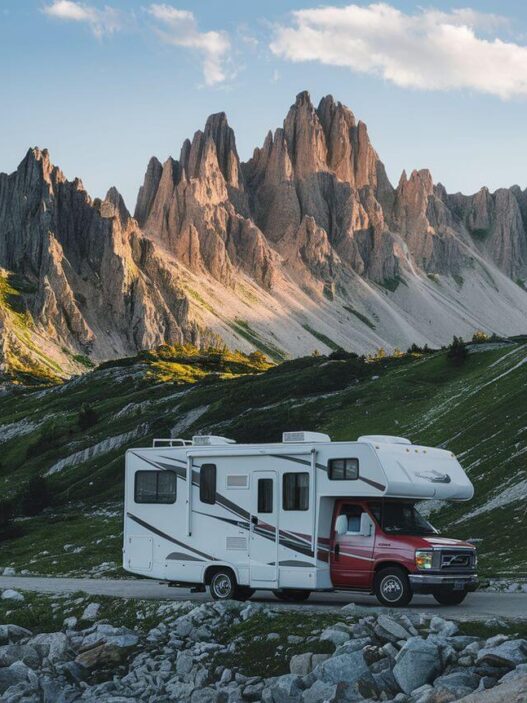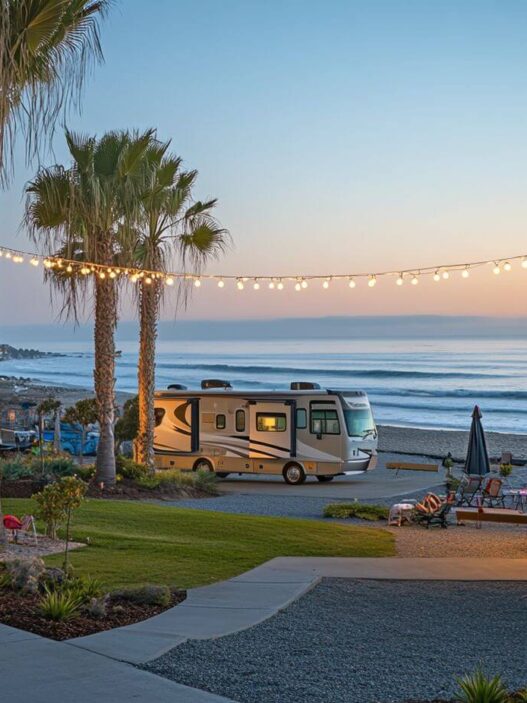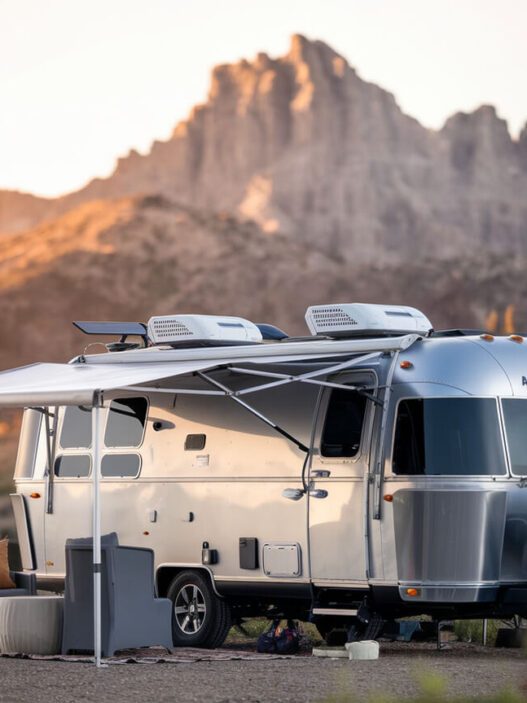While it’s not always ideal, rain doesn’t have to ruin your camping trip. With the right preparation and mindset, you can stay comfortable and even enjoy the unique atmosphere that wet weather brings to the great outdoors!
Here are some tried-and-true tips for camping in the rain to help you make the most of your next trip.
1. Invest In A Solid Tent
A quality tent is your first line of defense against wet weather. Look for one with a full rainfly that covers all mesh vents and windows. A vestibule is worth its weight in gold, giving you a dry space to store gear and take off wet clothes.
Before heading out, make sure to waterproof your tent with seam sealer and waterproofing spray. This simple step can make a huge difference in keeping you dry.
2. Set Up Tarps Like A Pro
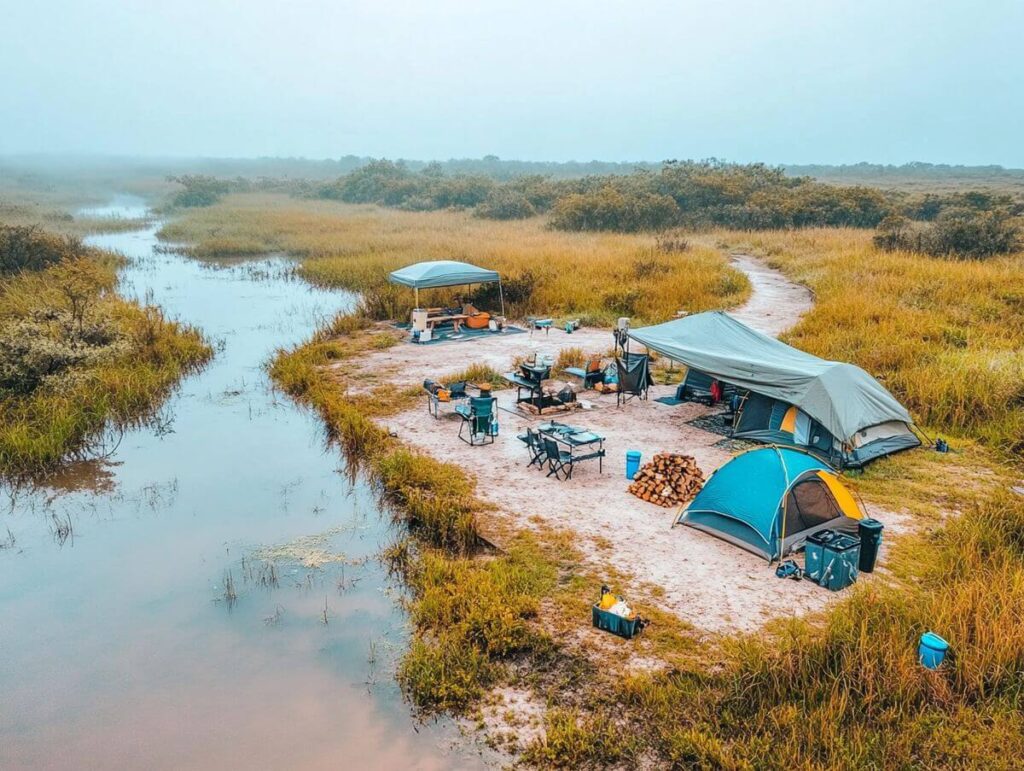
Think of tarps as your portable roof system. Before you even unpack your tent, get your first tarp up – this gives you a dry space to work from. Create covered areas for cooking and hanging out, and don’t forget to protect your firewood.
You can even put a tarp over your tent for extra protection, just make sure it’s properly angled for water runoff.
3. Choose Your Campsite Location Wisely
Location is everything when camping in the rain. Look for higher ground and avoid those tempting flat spots at the bottom of hills – they’ll turn into puddles faster than you can say “rain gear.” Stay clear of dead trees that could become hazards in wet conditions, and if you’re near water, keep an eye on rising levels.
4. Dress In Layers (And Forget About Cotton)
When it comes to rainy camping, your clothing choices can make or break your experience. Start with quick-dry base layers, add synthetic insulation (leave that down jacket at home), and top it off with a quality hardshell.
And the golden rule? No cotton. It soaks up water and stays wet, making you cold and miserable. If you’re expecting constant rain, invest in some rain pants – your legs will thank you.
5. Don’t Skimp On Rain Protection Gear
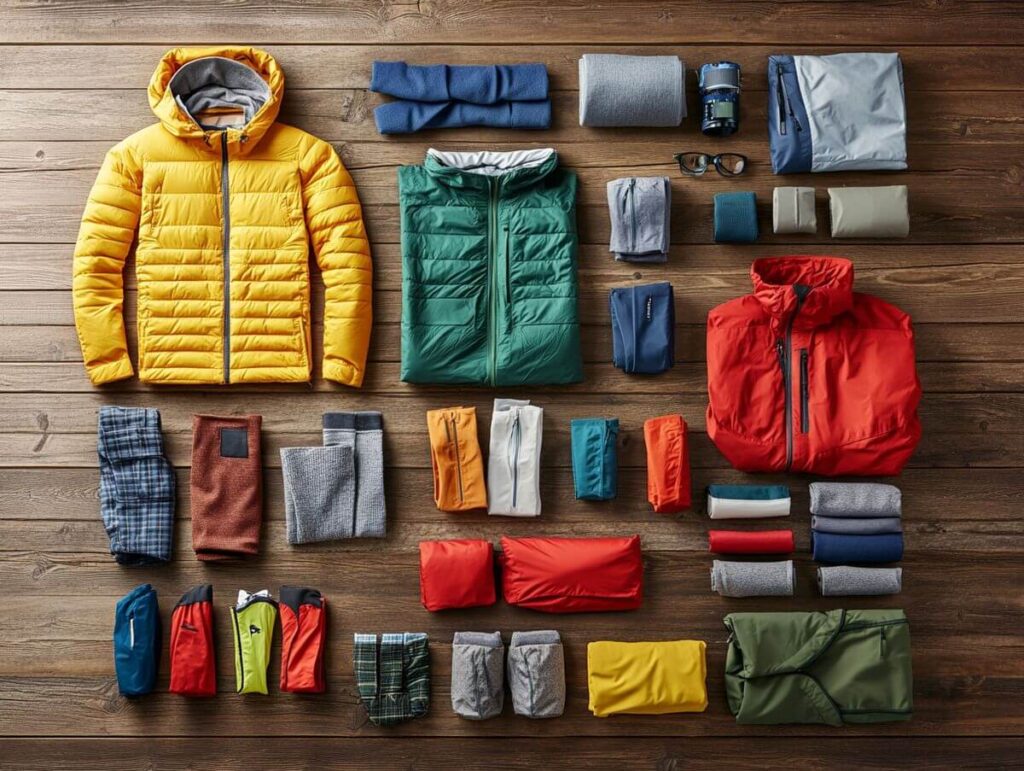
Camping in the rain is way worse when you’ve cut corners with a cheap plastic poncho. Invest in a proper rain jacket, waterproof boots, and consider gaiters for extra protection. A wide-brim hat or even a basic ball cap can keep rain off your face and help you see where you’re going.
Keep your rain gear easily accessible – you don’t want to be digging through your pack when the clouds open up.
6. Use A Proper Tent Footprint
Think of your tent footprint as your first defense against ground moisture. Here’s the key: make sure it’s slightly smaller than your tent floor – if it sticks out, it’ll collect water and channel it right under your tent. You can buy specific footprints for most tents, or use a tarp cut to size. This extra layer not only keeps you dry but also protects your tent from damage.
7. Make Your Tent A Dry Zone
Your tent should be treated like a sacred dry space. Create a strict “no wet gear inside” policy and use your vestibule as a transition area. Place a mat both outside and inside the door to catch dirt and water, and keep all gear away from the tent walls.
Think of your tent as your dry sanctuary! Once something gets wet in there, it’s tough to dry it out.
8. Control Condensation Through Smart Ventilation
Surprisingly, your own breath is often the biggest source of moisture inside your tent. Keep those vents open even when it’s raining – yes, really! Leave the outer rainfly door partially open and open up all windows and doors once the rain stops.
Good airflow is your best friend in preventing that dreaded morning drip from condensation.
9. Protect Your Gear With Waterproof Storage
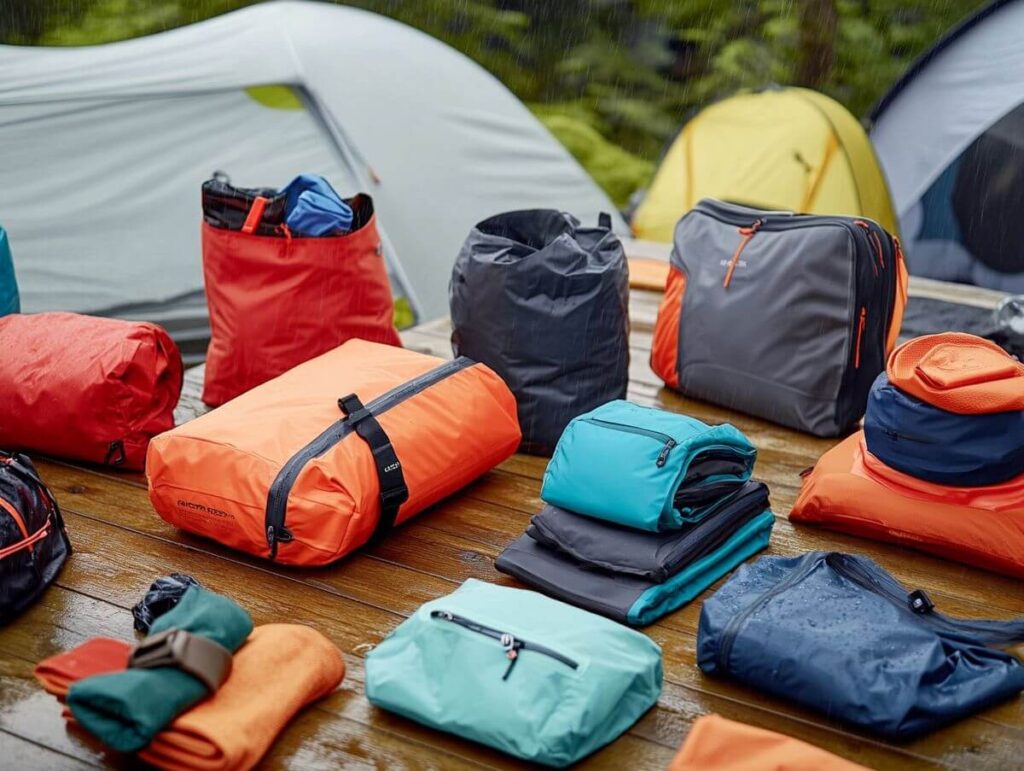
Here’s a little tip for camping in the rain that we all need to follow! Use waterproof containers and dry bags for your most important items. Simple garbage bags can work wonders as backup protection, and large zip-lock bags are perfect for smaller items.
The more protected your gear is, the more enjoyable your trip will be.
10. Make Your Meal Plan Rain-Friendly
Nobody wants to cook an elaborate meal in the rain. Pack some no-cook backup meals and use a camping stove instead of relying on a fire.
Set up your cooking area under a tarp or canopy (never inside your tent though), and keep meals simple. Those dehydrated camping meals might not be gourmet, but they’re perfect for wet weather.
11. Set Up A Protected Clothesline System
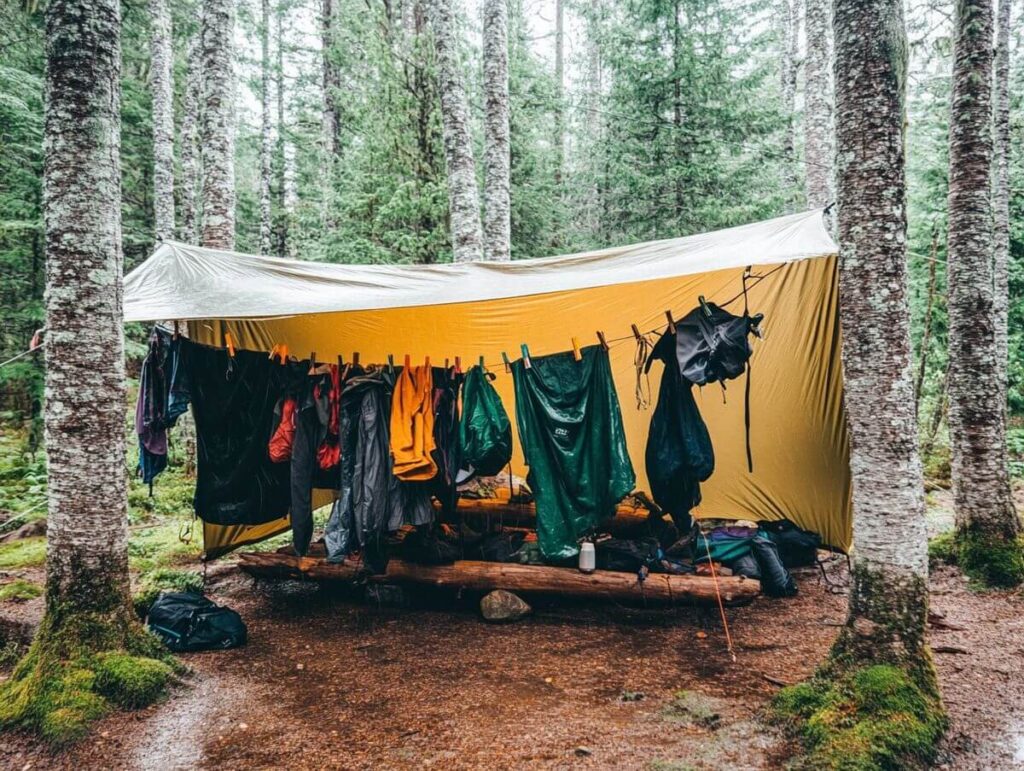
Wet clothes don’t have to stay wet. String up some paracord or rope under your tarp or canopy to create a drying area. Even if it’s still raining, hanging wet clothes helps them drip dry rather than staying bunched up in a soggy pile. Multiple lines give you more drying space.
12. Keep Your Fire-Starting Options Dry
Don’t let wet conditions leave you without warmth. Pack waterproof matches or lighters, and store some dry tinder in waterproof containers. If there’s a break in the rain, gather firewood immediately and store it under a tarp. Pro tip: check under dense trees for dry pine needles since they make excellent fire starters.
13. Always Pack Extra Dry Clothes
There’s nothing quite like the morale boost of changing into dry clothes. Keep at least one complete set of clothes in a waterproof bag to serve as your emergency dry set. Extra socks and underwear are worth their weight in gold. Keep another dry set in your vehicle as backup.
Trust us, having dedicated sleeping clothes that never leave the tent can make the difference between a good night’s sleep and a miserable one.
14. Perfect Your Tent Entry Strategy
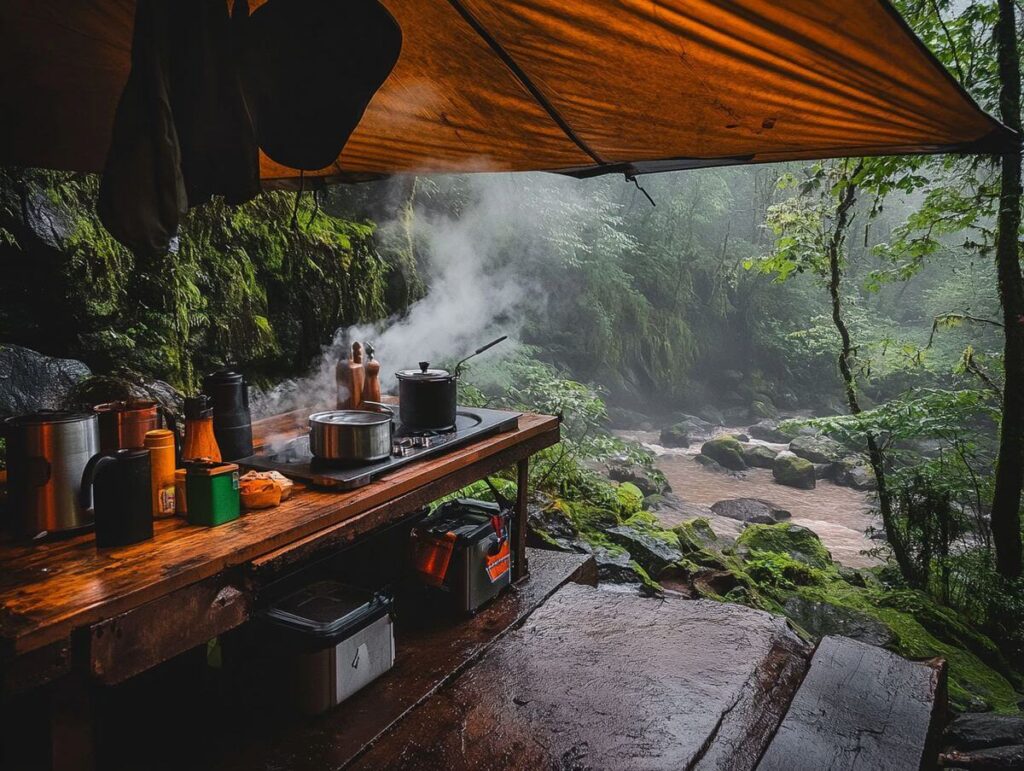
Your tent entrance is like an airlock – treat it with respect! Use your vestibule as a transition space where you can remove wet gear before entering. Position your tent door facing downhill so water doesn’t flow in, and keep towels handy at the entrance. A simple mat both inside and outside the door can make a huge difference in keeping the area dry.
15. Create A Cozy, Dry Sleeping Setup
Your sleeping bag is your sanctuary, so keep it that way! Never let it touch your tent walls, and opt for synthetic over down in wet conditions.
Use a sleeping pad for insulation from the cold ground, and bring extra blankets just in case. Keep a pair of clean, dry socks just for sleeping (your feet will thank you).
16. Manage Water Runoff Around Your Site
Be proactive about water management. If you’re on sandy or gravelly ground, you can create small drainage channels to direct water away from your tent. Keep an eye out for developing puddles and adjust accordingly. Remember, water always flows downhill – use this to your advantage when positioning your tent and gear.
17. Bring Indoor Entertainment Options
When it comes to tips for camping in the rain, this one is all about preserving your sanity. Rainy weather is the perfect excuse to break out those camp games. Pack cards and board games, bring some books, or download movies before you leave home. Having ways to entertain yourself means you won’t go stir crazy if you need to hunker down for a while. Group games are especially great for keeping spirits high during wet weather.
18. Don’t Forget Reliable Camp Lighting
Dark rainy days mean you’ll need more artificial light than usual. Pack multiple light sources like headlamps, flashlights, and lanterns that will be useful in different situations. Don’t forget extra batteries, and keep them in waterproof containers. Good lighting makes everything easier, from cooking dinner to playing cards in your tent.
19. Pack Essential Repair Tools
Be prepared for the worst. Bring extra tent stakes and ropes since they have a way of disappearing when you need them most. Pack seam sealer for emergency repairs, and basic tools for fixing gear.
When something breaks in the rain, you’ll be glad you have the supplies to fix it right away.
20. Stay On Top Of Weather Updates
Knowledge is power when it comes to weather. Check forecasts regularly and keep an eye on local conditions. Learn to recognize warning signs of incoming storms, and listen to local radio for updates if you can. Being aware of what’s coming helps you plan activities and stay safe.
21. Have A System For Managing Wet Gear
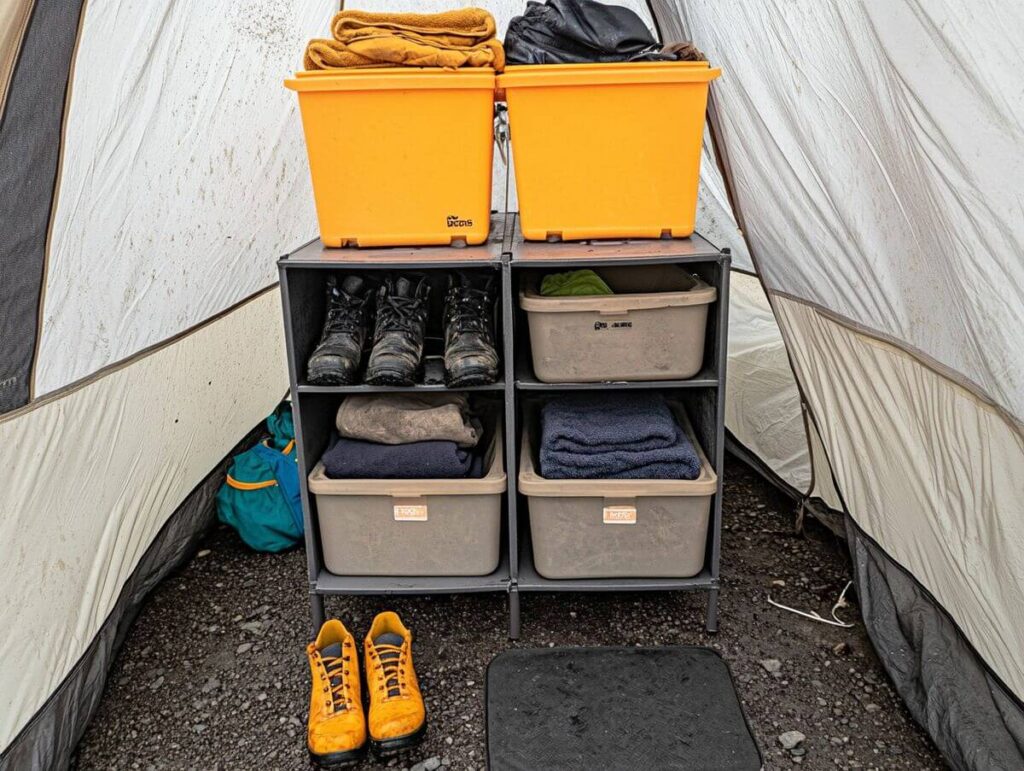
Wet gear needs attention or it can get nasty quick. Shake off water before packing up, wipe down tent walls, and air everything out whenever possible. Keep wet and dry gear separate, and make sure everything is completely dry before storing it for your next trip.
22. Create A Comfortable Community Space
Don’t let rain isolate everyone in their tents. Set up a communal shelter where people can gather (this could be a popup canopy or a large tarp). Create a covered eating area and make room for group activities.
Having a dry social space can make the difference between a fun camping trip and a miserable one.
23. Deal With Morning Dampness
Morning brings its own moisture challenges. Wipe down tent walls to remove condensation, air out sleeping bags if possible, and open all vents to get air moving. Taking care of dampness early in the day makes everything more comfortable later.
24. Bring The Right Cleanup Supplies
Multiple quick-dry towels are essential for wet weather camping. Pack absorbent cloths for wiping down gear and surfaces, and bring cleaning supplies for muddy equipment. If you’re camping with pets, bring extra towels for wiping muddy paws. Microfiber cloths are great for soaking up moisture without getting heavy.
25. Know When To Call It
Sometimes wisdom means knowing when to pack it in. There’s no shame in cutting a trip short during severe weather because it’s better than risking your safety or damaging your gear!
Have backup plans just in case, know where emergency shelters are, and stay practical about conditions. Remember, you can always come back another time when the weather’s better.
Wrapping Up
Camping in the rain doesn’t have to be a disaster. With these tips and the right attitude, you might even find yourself enjoying the peaceful patter of raindrops on your tent. Just remember to prepare well, stay flexible, and keep your sense of humor.
Sometimes the most memorable camping trips are the ones that don’t go exactly as planned!



